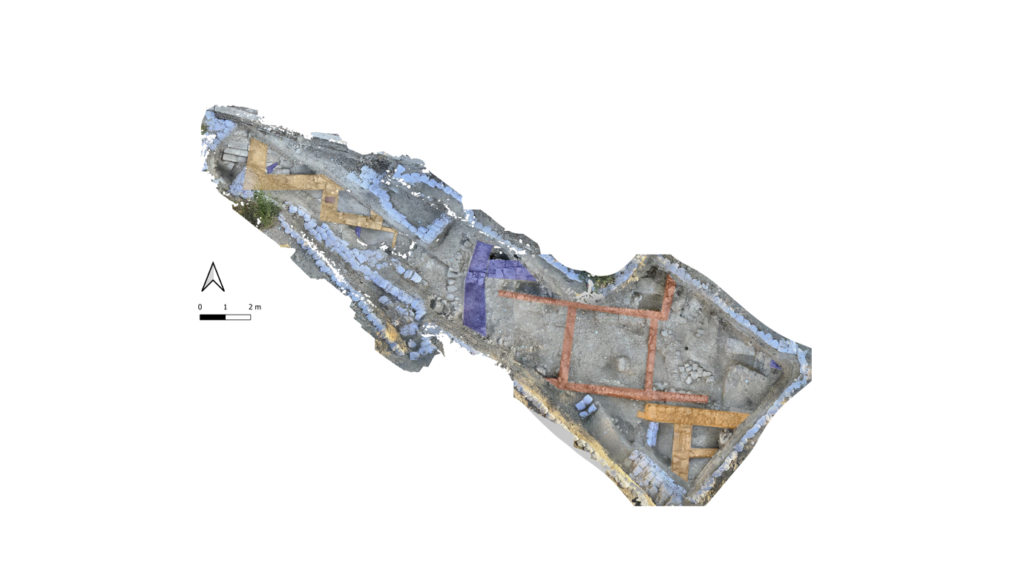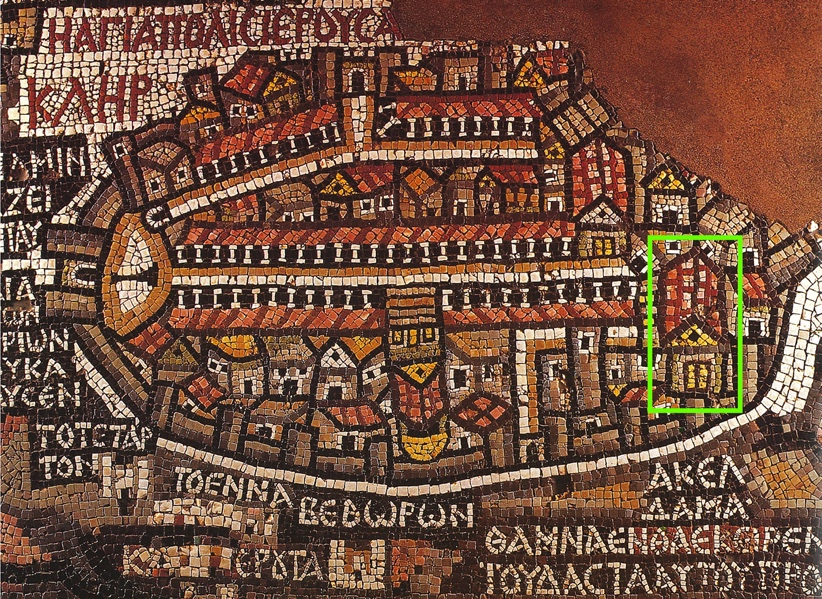
Today located outside the city walls of Jerusalem’s Old City, Mount Zion and the excavation areas of the DEI were part of the walled city in Roman and Byzantine times. This and its strong religious significance for Jews, Christians and Muslims from antiquity to the present day make the hill an interesting field of research.
The DEI was given the special honor by the Greek Orthodox Patriarchate and the Holy Synod to receive permission to excavate east and south of the Greek Orthodox seminary (Area VI) and even on the (few) open spaces of the Greek Orthodox cemetery (Area VIII).
The archaeological explorations in the summer of 2023 took place under the direction of Dieter Vieweger, Jennifer Zimni-Gitler, Katja Soennecken and Lee Muller-Crkvenjakov on the grounds of the Greek Orthodox Patriarchate of Jerusalem in cooperation with the Israeli Antiquities Authority in the person of Michael Chernin.

Christianity first flourished in Jerusalem in Byzantine times (4th-7th century AD). This was reflected in the construction of numerous churches in the city – one of them on today’s Mount Zion. Built in 386 AD, the ruins of the Hagia Sion church are located directly below the modern Dormition Abbey. A residential area was built around it, which housed the wealthy inhabitants of the city. This year’s DEI excavations uncovered large parts of this quarter (Area VI-2). The individual rooms of the houses explored had carefully plastered walls and some had mosaic floors.


Another complex to the west of the area can be interpreted as a bath, which unmistakably contained hypocausts and tubuli. The marble interior and filigree vessels (Byzantine Fine Ware) indicate an elevated status and a certain wealth of the inhabitants.

Particularly noteworthy is the discovery of an ostracon, a keramaic sherd inscribed with gall ink.
The Hagia Sion was the center of attraction for many pilgrims at this time. Various Christian traditions were localized here in Byzantine times, such as the Dormition of the Virgin Mary and the Pentecost event, which are still commemorated at the same place today.
Despite being destroyed by the Sassanid conquest in 614 AD, the church was rebuilt several times and continued to be used until the Crusader period (Sancta Maria in Monte Sion) and was even extended.

The ground plan of the church can only be roughly reconstructed so far, as the archaeological findings are only based on the early excavations from the time the modern abbey was built (1898-1900) by Baurat Sandel and H. Renard and M. Gisler, as well as a small rescue excavation from the 1980s by B. Pixner and E. Eisenberg. The latter brought to light the Crusader extension to the church. This year’s excavations by the DEI uncovered another part of the magnificent building. The excavations in the area of the Greek Orthodox cemetery brought to light the narthex belonging to the Byzantine church with a fresh water channel, which was probably used to supply the atrium courtyard with water.

From the Middle Ages onwards, Mount Zion was located outside the walled city, but this did not detract from the use of the Zion Church. The church and its canonry now had to be specially protected. This was achieved by building a fortification wall around the monastery, as evidenced by the map of Cambrai and various written sources such as Johannes Phocas and the Gesta regis Henrici Secundi benedicti Abbatis).
In 2021 and 2022, parts of a mighty enclosure wall were excavated in the gardens of Dormition Abbey. Another, differently built, mighty Byzantine wall runs through the area of the “Greek Garden”.

Despite extensive excavations, some questions remain unanswered: For example, the exact course and chronology of Jerusalem’s historic city walls in the southwest of the city. The excavations will therefore continue next year on Mount Zion. Not only the exact south-western course of Jerusalem’s city walls in Hellenistic, early Roman and Byzantine times is of interest, but also the question of whether there was an Iron Age city wall at this location, because the size of the Old Testament city expansion by Hezekiah in the 8th century is not known. n. AD is hotly disputed.
